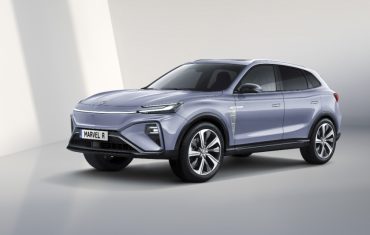
The realities of long-distance driving in an electric vehicle
For your fleetEventually, post-COVID-19, we will be able to travel our country again with long drives exploring our wide, brown land. And you might want to think about doing it in a more environmentally sustainable way.
Most drivers and road users understand – and accept – the link between internal combustion engine (ICE) use, and the adverse impacts that use can have on our environment in the form of CO2 emissions. According to research compiled by ClimateWorks Australia, emissions from traditional passenger and light commercial vehicles represent 17 percent of Australia’s emissions and, having risen by 47 percent since 1990, is the country’s fastest growing source of CO2 emissions.
Getting to the starting line
There is growing support within the transport community for the switch to electric vehicles as a way of reducing emissions, and retail sales data suggests that increasing number of new battery electric and battery/petrol hybrid vehicle sales will continue to rise in coming years. But, one of the most consistent objections people raise when it comes to EVs is recharging options – or to be precise, the lack of them. Fear of being stranded a long way from your home base without access to recharging facilities looms large in the mind of many Australian road users.
There are also concerns about the capabilities of EVs compared to their ICE counterparts. At the 2019 Federal Election, more conservative politicians declared that EVs would lead to the end of the weekend ‘away’.
“EVs won’t tow your trailer, they’re not going to tow your boat. It’s not going to get you out to your favourite camping spot with your family,” declared Scott Morrison in response to an opposition target of having 50 percent of the vehicles on Australian roads electrically powered by 2050.
Since the Prime Minister’s pre-election comments in May 2019, a number of motoring journalists and EV enthusiasts have taken it upon themselves to see if there’s a pronounced disadvantage to long-distance driving in an EV, as opposed to an ICE vehicle. The reality is that, in many instances, EVs handle long-distance just as well as their ICE ‘opposition’.
But even then, the reality is there are some elements of long-distance driving in an EV that you will have to take into consideration – and plan for – when it comes to a pollution-reducing road trip.
Plan, plan, plan… and then plan some more
There’s a time and a place in life for throwing caution to the wind, and letting the cards fall as they may. Long-distance driving – regardless of your vehicle’s powertrain – isn’t one of them.
Any road trip you undertake requires careful planning, and when it comes to EVs and long-distance driving, good planning is absolutely critical.
1. Map out your route
Before hitting the road, be sure to do some research on where, and what kind of charging facilities you’ll come across en route to your destination. Resources like My Electric Car and Drive Zero are just two of a number of websites you can use to plan a recharging stop. If it helps, think of this kind of preparation as similar to the water, tyre pressure, coolant and oil level checks that any responsible driver would do in this situation before they leave home.
Try to get a feel for the terrain that your journey will include. Will it involve a lot of uphill driving? Extended uphill climbs might take a sizeable bite out of your battery range, so you may need to plan accordingly.
Will your trip take more than one day’s travel? If so, many caravan parks around Australia now allow EV users to hire powered sites for overnight charging. Breaking up your driving sessions is good form on long-distances regardless of the vehicle, so maybe the idea of plugging in, having a shower, a good night’s rest and waking up to a 100 percent charged battery via DC power, might be an alternative to rapid-charging the entire way to your destination.
2. Take. Your. Rest breaks.
It’s not just your EVs batteries that need to be recharged. Drowsy or fatigued drivers are much more likely to become a statistic than their properly rested counterparts. One of the big selling points when it comes to EVs is the opportunity to rest while your battery is recharging.
Fast-charging stations often partner with café facilities, allowing drivers (and back-seat drivers as well!) the perfect opportunity to stretch their legs and get some fresh air. If rapid-charging facilities aren’t nearby, the overnight caravan park stop with DC charging might be a good option.
3. Account for charging times
Keep in mind how long it takes to charge the vehicle’s battery. It’s not uncommon for many EVs to reach 80 percent capacity in a relatively short period of time (via DC or fast-charge). That last 20 percent, however? That takes a bit longer.
Planning for this downtime will help minimise frustration and impatience. You don’t always fill up your vehicle’s petrol tank every time you visit a petrol station, so would the same apply here? Will an 80 percent charge get you where you’re going, allowing you to top up to 100 percent after you arrive, or do you need to be at 100 percent battery capacity for the next leg of your journey?
4. Use the power of regenerative braking
One of the many nifty features of EVs is their regenerative braking function – also known as regen. If you’re not familiar with it, regen is a process that allows electric and hybrid vehicles to capture the kinetic energy produced when braking to add charge to the car’s battery. In layperson’s terms: taking your foot off the throttle in an EV will send power stored in the wheels back into the battery, while slowing the car down.
As Drive Zero explains, electric vehicles “still have a brake, you just only use that when you need harder braking power.”
Regen is absolutely no substitute for proper charging but getting into the habit of using regen to slow you down, instead of purely using your brakes, is a great way to get a little extra mileage out of your batteries.
5. Keep an eye on power-hungry gadgets and little comforts
Creature comforts are undeniably important on long-distance drives. The reality though, is that options like cruise control, climate control, Bluetooth and smartphone use as well as GPS and music systems use all impact your EVs range.
Of course, it’s unrealistic to be driving for extended periods of time in hot weather without cooling things down with a little air conditioning (or the heater in winter). Based on the stretch till your next charging stop, it might be a good idea to limit GPS use to unfamiliar territory, and tuning into the radio only for essential info like bushfire updates.
No one is saying you can’t make your road-trip comfortable, but you do need to pay attention to how using these accessories impacts an electric vehicle’s battery range and plan accordingly.
6. Pack smartly
Weight has a big impact on EV battery range. If you’re going away for an extended period of time, pack only the essentials of what you’ll need to take with you (if you haven’t already).
Conversely, if you do need to pack the metaphorical kitchen sink, then factor that into your range calculations and travel times.
In conclusion
The long roadtrip will continue to be a great part of Australian life – even in this electrified auto future. As EV use advances in Australia, a number of stories published – such as this one and this one – illustrate that EV battery range more than holds its own against the time-honoured ICE.
There are exceptions of course. EVs don’t quite stack up when it comes to heavy load bearing or towing capacity yet – but car makers promise us these EV models will come eventually.
As acceptance, confidence and consumer demand for EVs increase, so will the number of charging facilities and vehicle choices. And, while towing a boat or trailer may not be practical today, the advances in EV battery tech mean that it’s purely a question of when, not if.
Watch us put an EV to the test on a drive from Melbourne to Sydney in a Hyundai Kona:
 Driving Insights
Driving Insights




